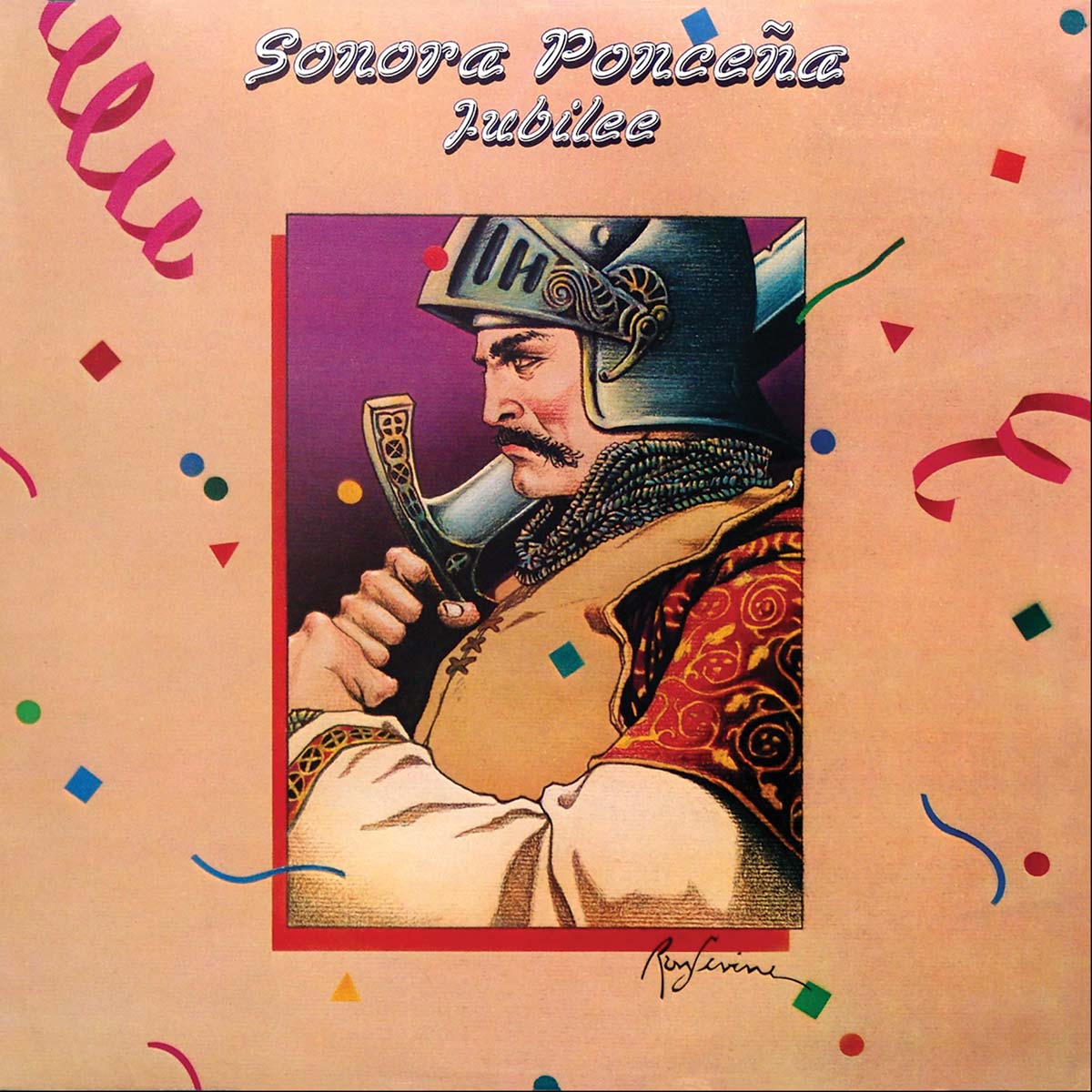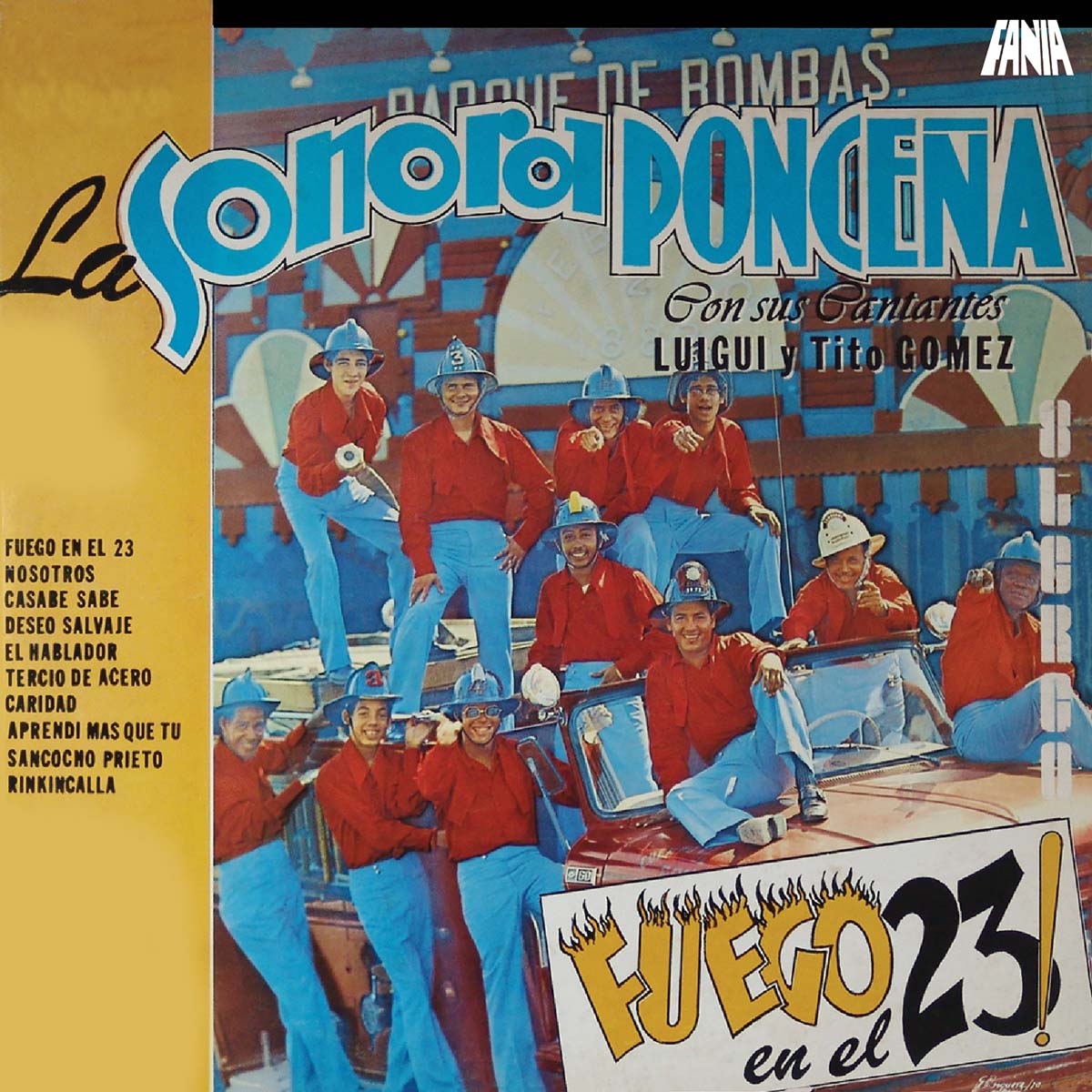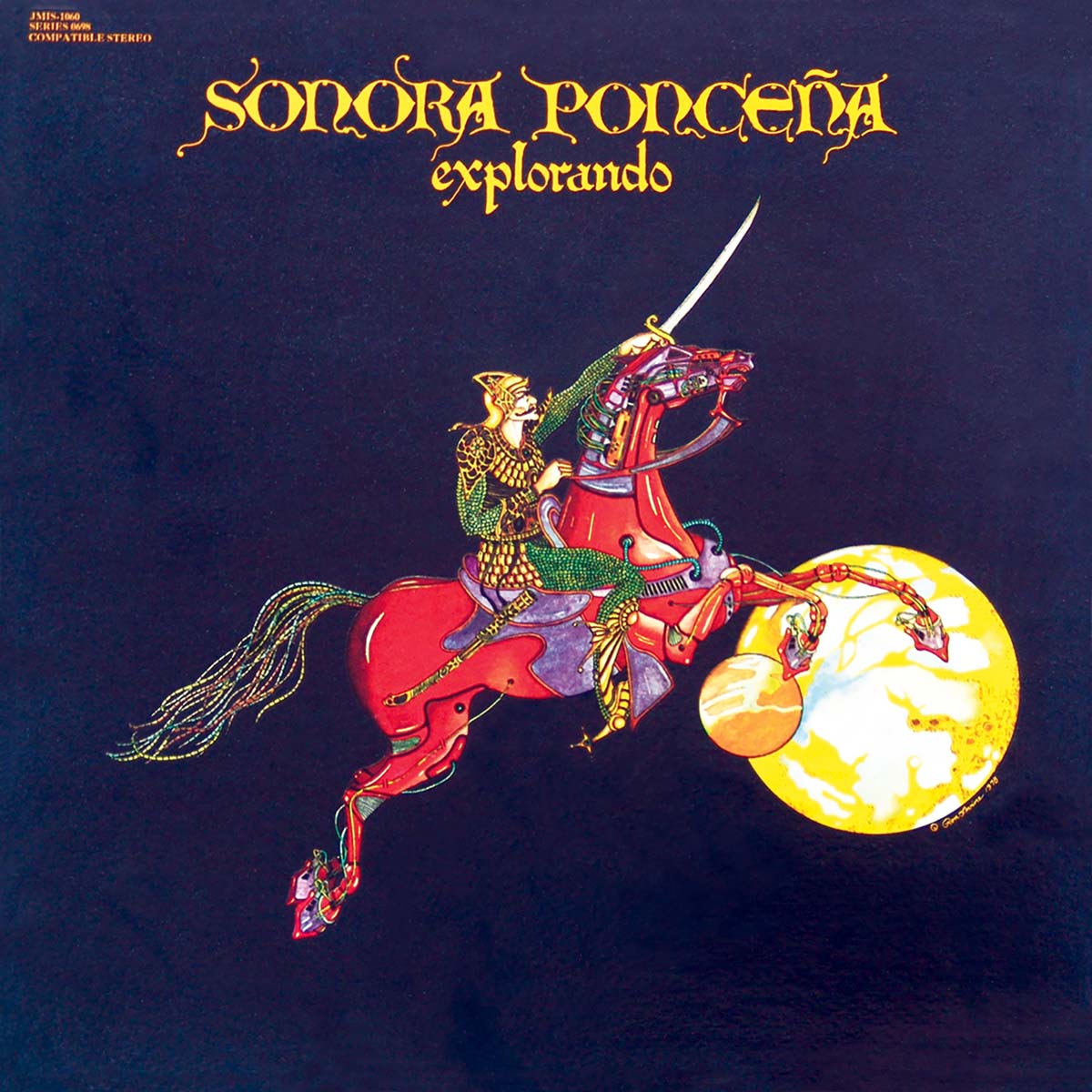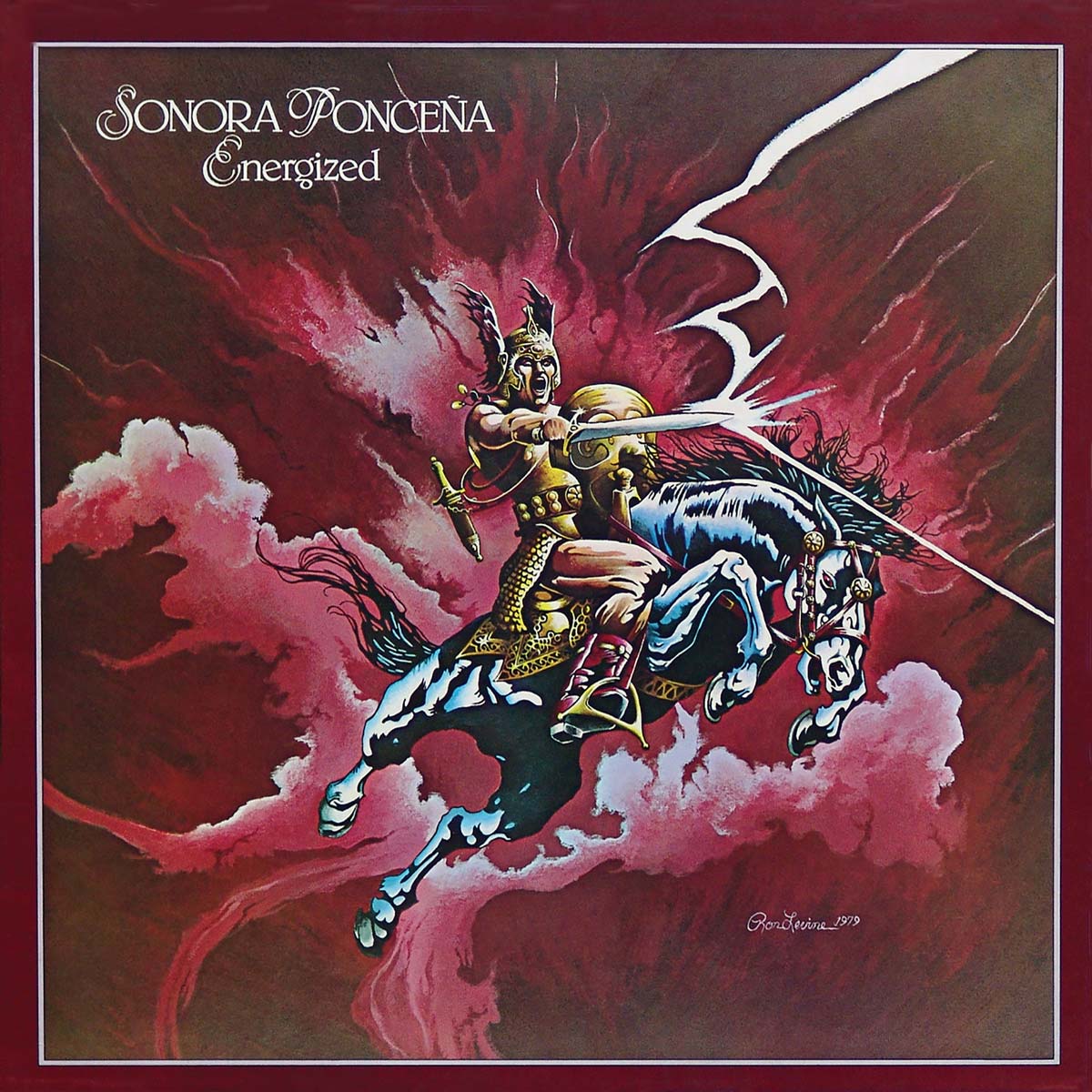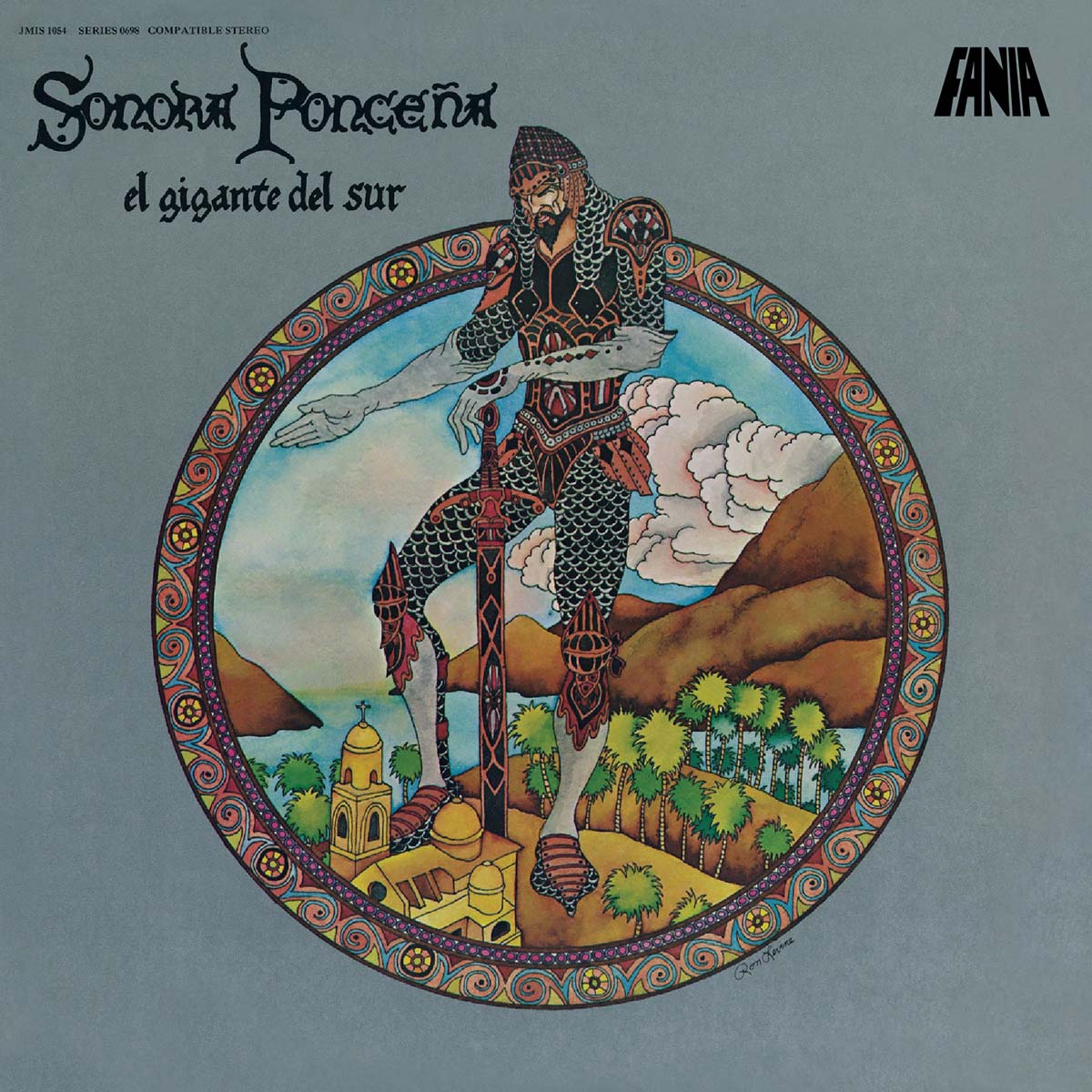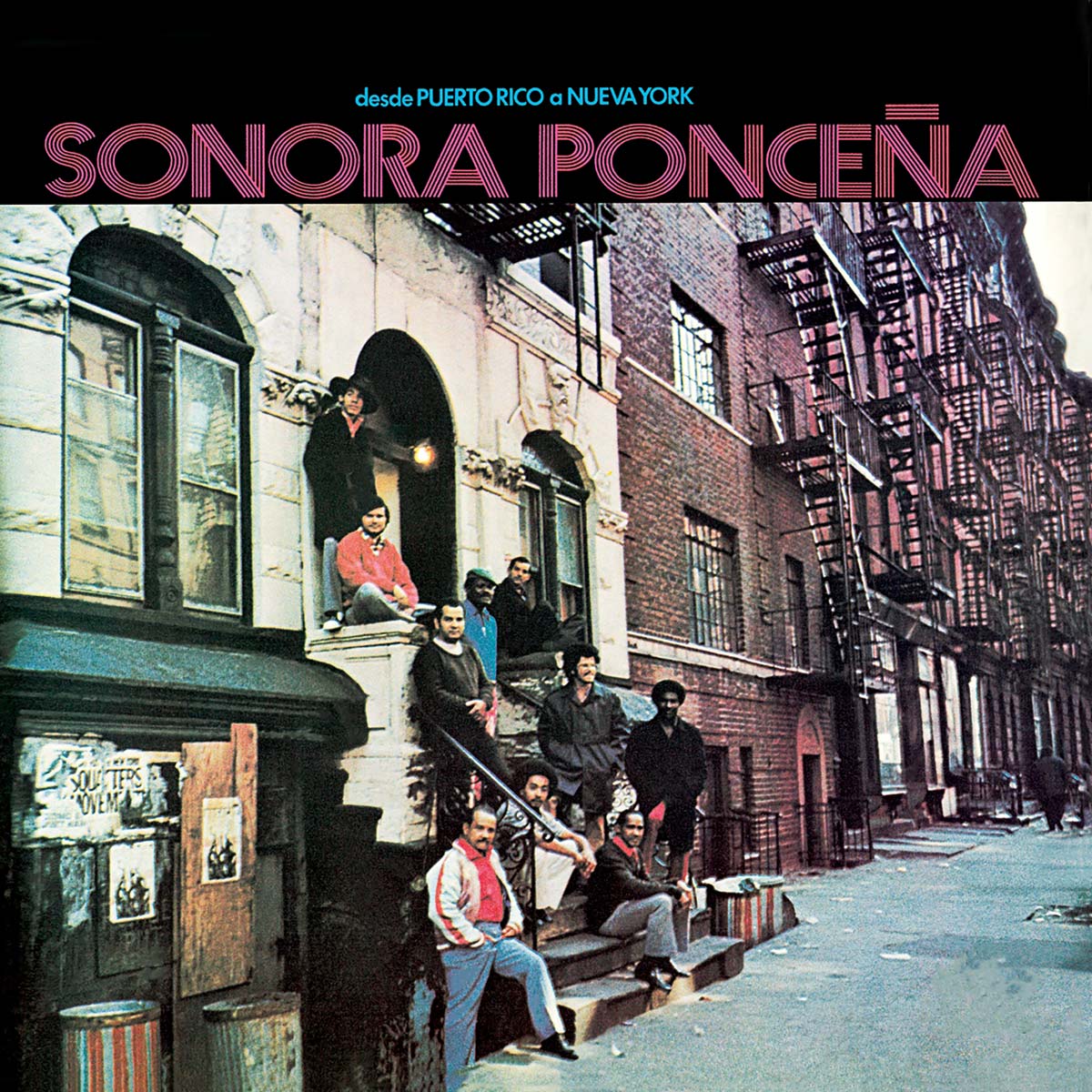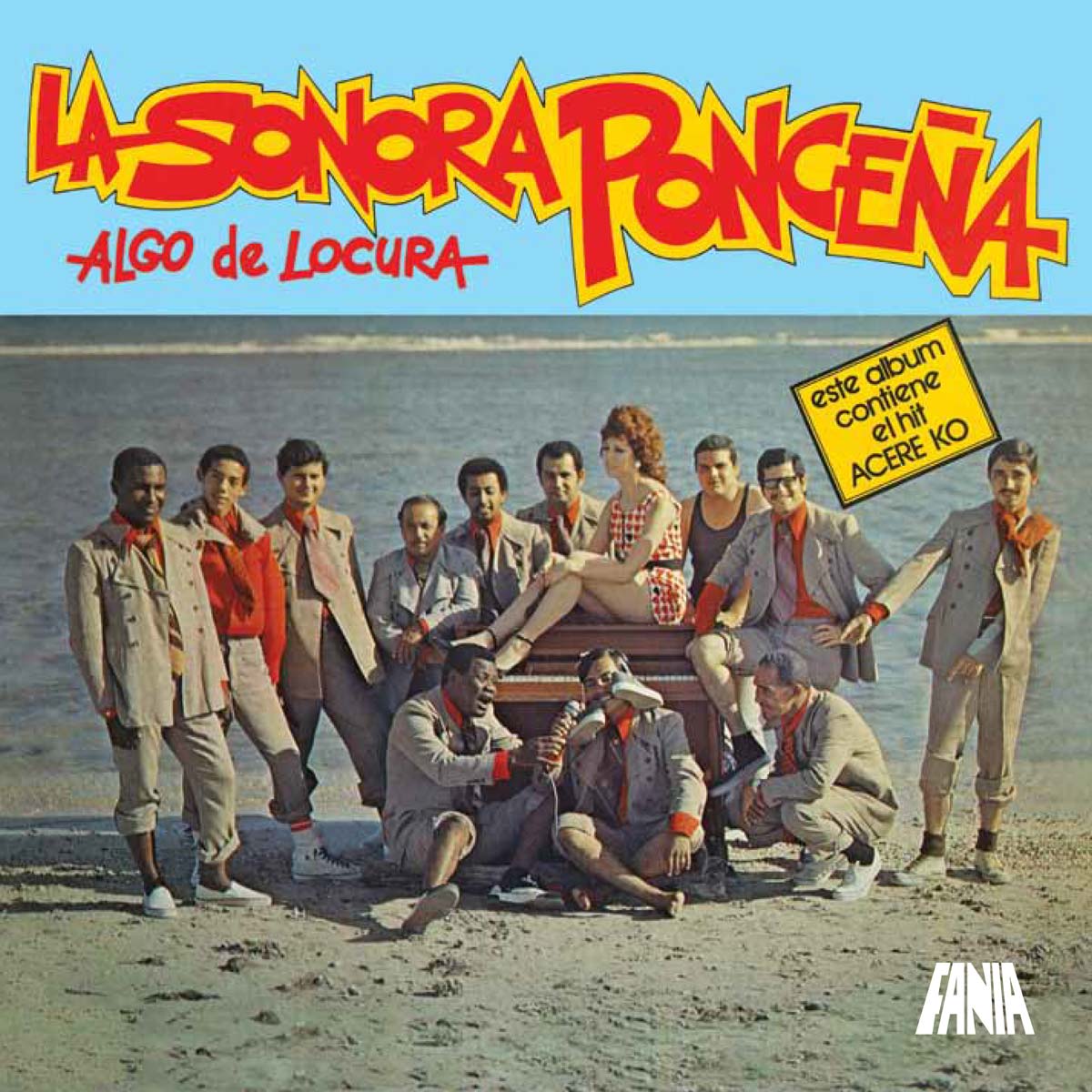
It is unthinkable that the third album by one of the most beloved salsa outfits of all time would have been overlooked for so long. La Sonora Ponceña’s first two LPs, Hacheros Pa’ un Palo (1968) and Fuego en el 23 (1969), were bona fide hits and established a powerhouse sound based around the virtuosic piano of their leader Papo Lucca and a full-bodied percussion section that laid a propulsive bed for an ever-winding harmonic convergence of trumpets with the piano and vocals.
After a two-year break, Papo and his band of merry men came back with a vengeance. It was a robust moment in the early phase of the band’s long history, as they would record four LPs from 1971 to ’72, working mainly in New York with producer Larry Harlow. La Sonora Ponceña was originally founded by Papo’s father, Don Enrique “Quique” Lucca Caraballo, in 1954 from the ashes of his earlier band Conjunto Internacional (aka Orquesta Internacional). The concept of having a horn section made up completely of trumpets was lifted from one of Quique’s favorite Cuban groups, La Sonora Matancera, as was the idea for the name of his new band. By incorporating the name of his hometown of Ponce, Puerto Rico, he was not only showing pride for his small town on the island’s southern coast, he was also making a bold statement about this Puerto Rican band’s place in the lineage of Afro-Cuban musical history. The not-so-secret ingredient in the mix was Quique’s son, Enrique “Papo” Lucca Jr. Born in 1946, he was a child prodigy who, at the age of six, began studying various instruments and music theory at the Free School of Music.
His father saw great potential in him and fostered his talent with private lessons from pianist Ramon Fernandez. Papo would record his first piano solo at the age of twelve as a guest artist with La Sonora Ponceña as they were the backing band for popular vocalists Felipe Rodriguez and Davilita on the album Al Cómpas de las Sonoras. Two years later, he stepped in as a full-time member of the band. In 1960, Sonora Ponceña went to New York City where they performed at the Manhattan Center and the Teatro Puerto Rico to rave reviews. Papo was a standout for the American audiences. Around this time, he was exposed to jazz and decided to continue his education at the Puerto Rico Conservatory of Music. He honed his ability to commingle Cuban-style piano riffs fluidly with a jazz approach. This was an important break from the traditional Puerto Rican style of the time where the piano would vamp, functioning more as a steady rhythm instrument and less as an expressive one. It would be this winning combination of styles that kept the groove moving forward and became an essential ingredient to the Sonora Ponceña sound. By 1968, Papo had taken over as musical director of the band while his father kept his hand in as director, and they soon inked a deal with Inca Records—a partnership that lasted for over thirty albums. The group was on a roll by the time they made their third album. As with their earlier recordings, the sound is raw, a mix of old-school styles with a flair for improvisation. The trumpet and rhythm sections form a well-oiled machine, while the lead singers, Luis Guillermo “Luigui” Texidor Ortiz and Humberto “Tito” Gómez, tread the line between youthful irreverence and respect for the past with great dexterity.
Larry Harlow had no idea who La Sonora Ponceña was when he came on as producer. “That was one of my first productions,” he says, “and I was kind of assigned that by Jerry Masucci.” But Harlow felt that they were kindred spirits, and even though the band was coming from Puerto Rico, he understood their deep-seated connection through the Cuban conjunto band model and immediately saw what a great player Papo Lucca was. “He had his own style of playing. He was an original!” The band kicks off the album with the bombastic rumbon “Acere Ko,” a fast-paced party starter that was the big hit off of the album. Luigui Texidor belts it out over a furious barrage of trumpets and percussion. The band works their way through a few deep guaguancós and a simmering bolero before landing on the centerpieces of the album.
The last cut on the first side, “Yemaya,” is a hot Afro-influenced paean to the powerful ocean mother. For the first third of the song, the somber, rocking beat of the sea is held forth by Papo’s piano coupling onto the steady rhythm that the percussion section has laid down, as the tropical call of the trumpets floats over them. Then Papo signals the skies to open, and the track takes on a sunnier disposition as the group works itself into a frenzy. Side two opens with “La Pobreza y Yo,” a muscular, sobering son montuno, before diving into the heart of the album, the masterful “Oye Mi Quinto.” This descarga guagauncó kicks off with a mesmerizing, extended interplay between the percussion section and vocalists. After a couple of minutes, Papo Lucca’s true genius shines through as he leads the band through a series of deft changes in a complex and satisfying arrangement. The band would grow to embrace a more experimental sound a few years later, but there is something charming about the exuberance of this early record, part of which is due to the production. “They were a simple, easy band to produce, because it was just trumpets,” Harlow recalls. “They were a good band, very well rehearsed, because they played every day in Puerto Rico and they had been playing those songs for a while before they went into the studio.” Harlow noticed the young Papo watching him behind the mixing board and took him under his wing. “I kind of tutored him in the studio. I taught him about sound waves and frequencies and things like that. He picked up production pretty quickly, and in a couple of years, he became a pretty good producer himself.” Liner notes by Robbie Busch


